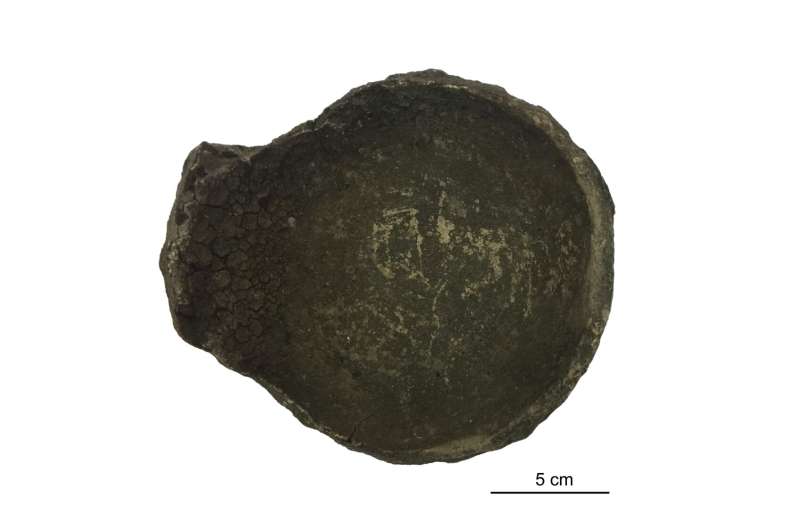This article has been reviewed according to Science X's editorial process and policies. Editors have highlighted the following attributes while ensuring the content's credibility:
fact-checked
peer-reviewed publication
trusted source
proofread
Scientists reveal foodcrust archaeology through molecule excavation

A lipid and proteomic study of ancient carbonized material (foodcrust) on pottery from the Taihu Lake region of eastern China has revealed the presence of rice, seafood consumption, various pottery functions, as well as the southward spread and planting of millet during the 4th millennium BCE.
The study, conducted by researchers from the University of Chinese Academy of Sciences (UCAS), the Institute of Vertebrate Paleontology and Paleoanthropology of the Chinese Academy of Sciences, Nanjing Museum and Capital Normal University, provides molecular evidence for understanding the subsistence strategies of ancient people in the late Neolithic era around the Taihu Lake.
In the study published in the Journal of Archaeological Science, the researchers examined 57 pot sherds with foodcrusts mainly attributed to the Songze cultural period (ca. 5800–5300 BP). Using the lipid analysis platform (including gas chromatography-mass spectrometry, gas chromatography-combustion isotope ratio mass spectrometry, etc.) and proteomics platform, they identified compounds preserved in the foodcrusts attached to the inner wall of pottery.
According to the researchers, these foodcrusts contained interpretable concentrations of lipid compounds from starch plants such as rice and millet, as well as freshwater and seafood oils, non-ruminant and ruminant adipose fats. Two vitamin E compounds (γ-tocopherol and α-tocopherol) and aliphatic alcohols were identified as biomarkers for rice.
Millet biomarkers were also found in some samples from the Songze cultural period, representing the first discovery of millet remains at prehistoric sites in the Taihu Lake region. This discovery suggests a new route of millet southward transmission, and that the millet should have been transferred to the Taihu Lake region before 5800 BP.
Specific peptides of muscle proteins from large yellow croaker and mandarin fish, as well as mammal collagen proteins from wild Caprinae and an unsequenced Perissodactyla species were identified in some samples. This is the first time that marine fish remains (large yellow croaker) have been discovered from this period.
The researchers also showed that pottery, such as Ding and Zeng, was used to cook various animal and plant ingredients, indicating its versatile use. The study's findings from lipid analysis and proteomics were complementary, with potential connections. For example, as lipid biomarkers of high-temperature heating, long-chain ketones may serve as a pre-screening indicator for further proteomic analysis.
This study provides direct evidence for the exploitation of animal and plant resources during this period, including freshwater products, marine fish, rice and millet, and discloses a diet of rice and fish (Fandao Gengyu, 饭稻羹鱼) in Neolithic East China. Therefore, the combination of lipid and proteomic analysis has great potential for the analysis of organic residue in foodcrusts.
"Compared to lipid analysis, proteomics offers greater precision in species and tissue identification. The integration of these two methods can offer complementary information about the subsistence strategies of ancient people. However, the paleoproteomic analysis of foodcrusts has a relatively low success rate, necessitating the development of a suitable pre-screening approach to evaluate protein preservation and guide further analysis," said Rao Huiyun, chief analyst for the study and a researcher from the Institute of Vertebrate Paleontology and Paleoanthropology.
"The application of lipid analysis in Chinese archaeology is still in its initial stage, but it will undoubtedly promote the development of Chinese archaeology and enhance the research of ancient civilization," said Prof. Yang Yimin, principal investigator from UCAS.
More information: Nanning Lyu et al, Characterization of pottery foodcrusts through lipid and proteomic analyses: A case study from the Xiawan site in Yixing city, East China, Journal of Archaeological Science (2023). DOI: 10.1016/j.jas.2023.105902
Journal information: Journal of Archaeological Science
Provided by Chinese Academy of Sciences




















